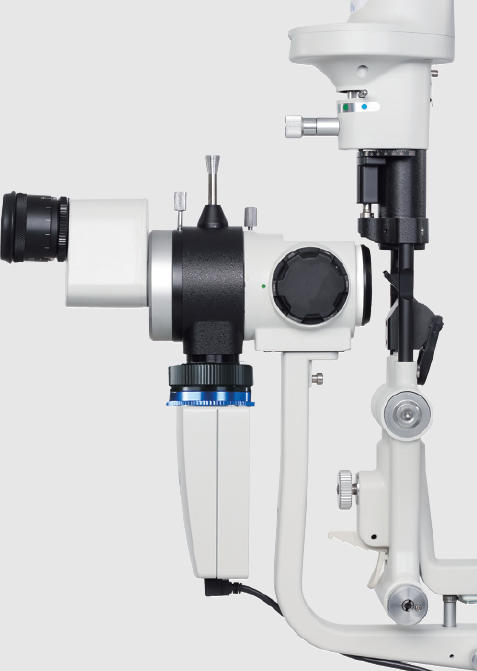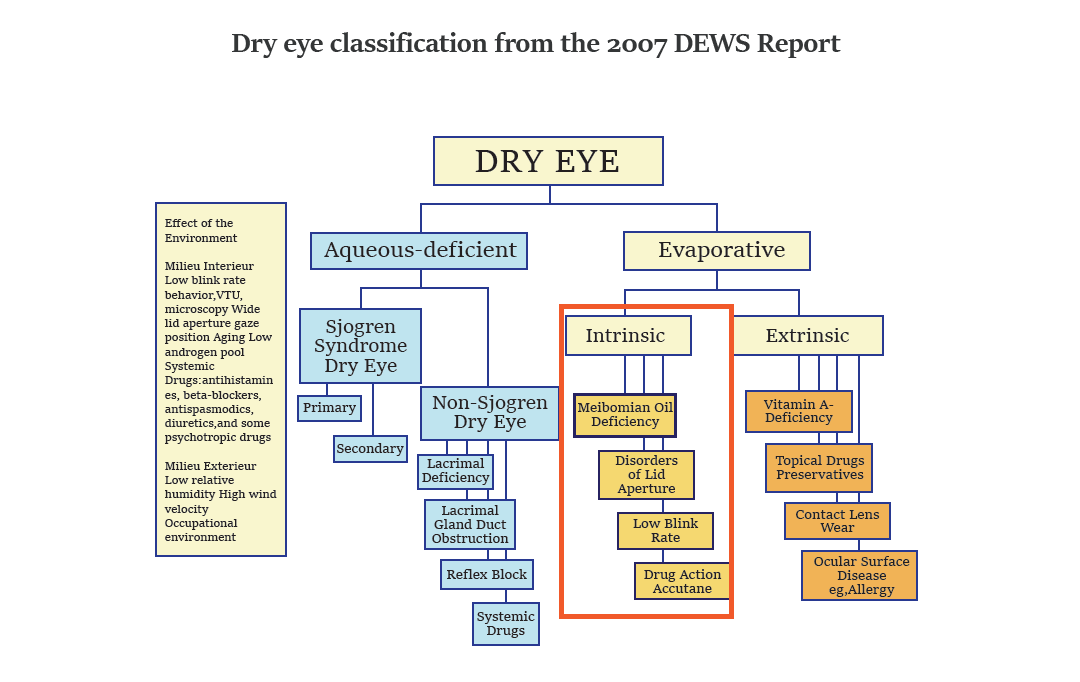Dry Eye Clinic
Diagnosis
Tests and procedures that may be used to determine the cause of your dry eyes include:
- A comprehensive eye exam. An eye exam that includes a complete history of your overall health and your eye health can help your doctor diagnose the cause of your dry eyes.
- Measuring the volume of your tears. Your doctor may measure your tear production using the Schirmer test. In this test, blotting strips of paper are placed under your lower eyelids. After five minutes your doctor measures the amount of strip soaked by your tears.
- Determining the quality of your tears. Other tests use special dyes in eyedrops to determine the surface condition of your eyes. Your doctor looks for staining patterns on the corneas and measures how long it takes before your tears evaporate.
Artificial Intelligence
We have recently enhanced our dry eye diagnostic capability with cutting-edge new technology.
Our new slit-lamp microscope was inspired by the structure of a firefly’s eye. It uses AI to analyze images of your eyes, giving us precise measurements and preliminary assessments at the touch of a button.
Dry eye is a condition with many potential causes and many clinical sub-classifications. This is why fast, AI-driven analyses are so valuable in discerning the cause, and therefore treatment, of a particular patient’s issue.
Just take a look:


Complicated? It can be. But don’t worry – treatment doesn’t have to be. Your doctor will talk through your diagnosis with you and outline a treatment plan, which can be quite simple.
Treatment
For most people with occasional or mild dry eye symptoms, it’s enough to regularly use over-the-counter eyedrops (artificial tears). If your symptoms are persistent and more serious, you have other options. What you do depends on what’s causing your dry eyes.
Some treatments focus on reversing or managing a condition or factor that’s causing your dry eyes. Other treatments can improve your tear quality or stop your tears from quickly draining away from your eyes.
In other cases, treating an underlying health issue can help clear up the signs and symptoms of dry eyes. For instance, if a medication is causing your dry eyes, your doctor may recommend a different medication that doesn’t cause that side effect.
If you have an eyelid condition, such as out-turning lids (ectropion), your doctor may refer you to an eye surgeon who specializes in plastic surgery of the eyelids (oculoplastic surgeon). Or if you have rheumatoid arthritis, your doctor may refer you to a rheumatologist.
Sometimes, treating dry eye is as simple as adding a supplement, such as this one, to your diet:
